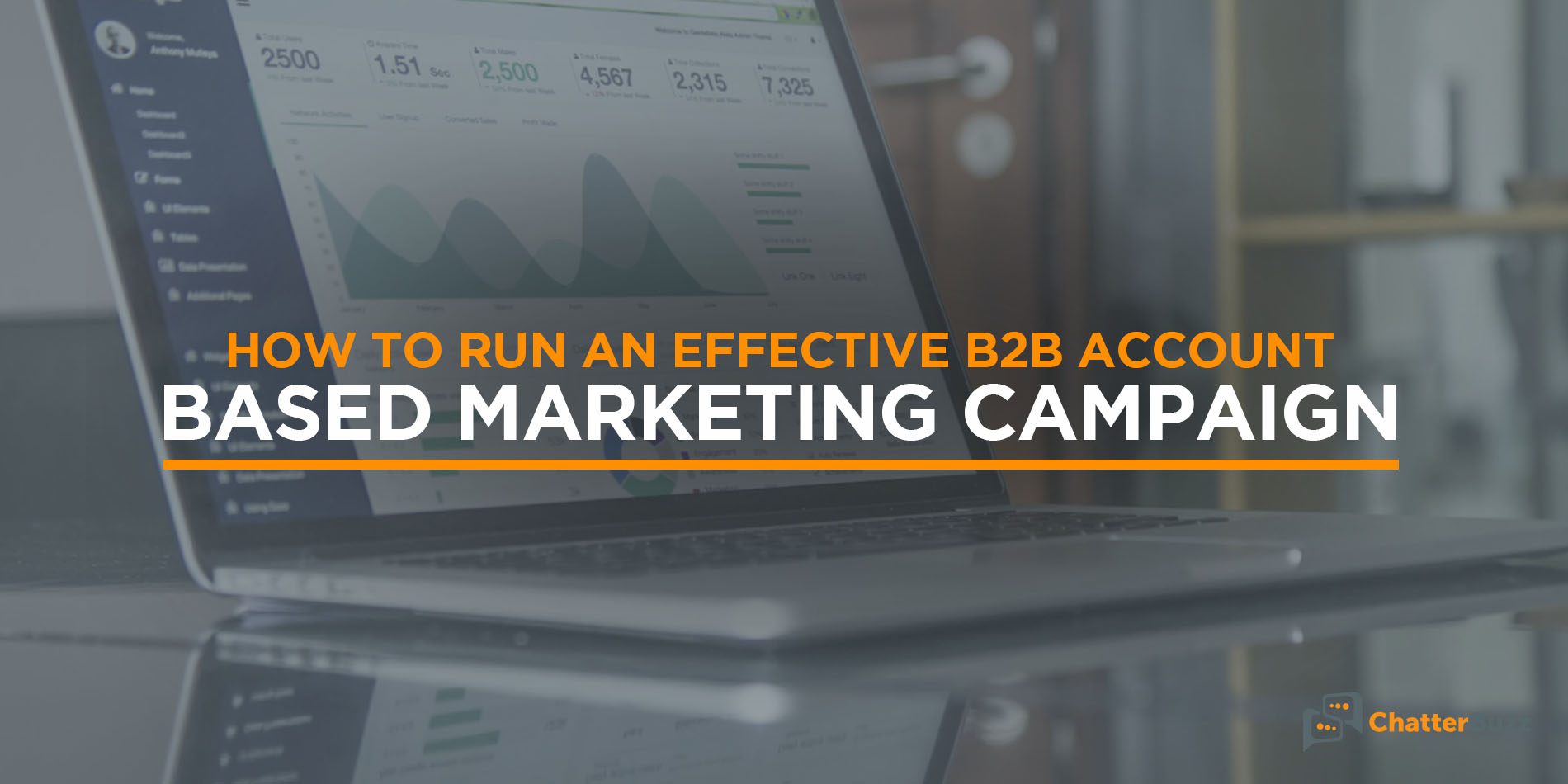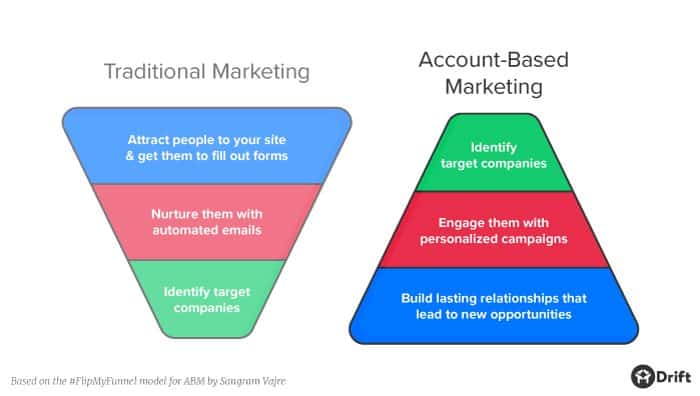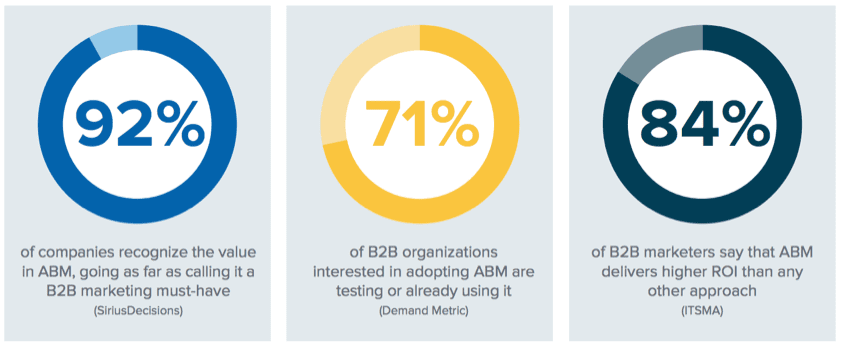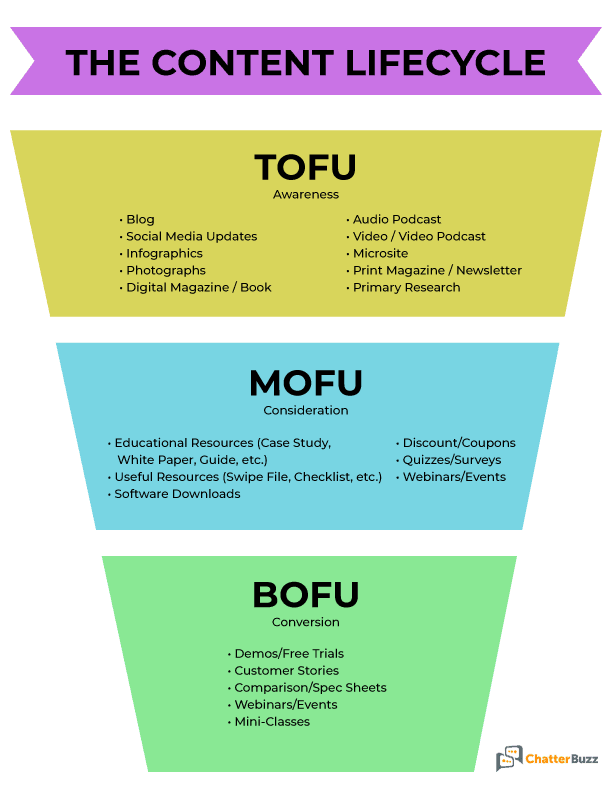How to Run an Effective B2B Account Based Marketing Campaign

There are a plethora of buzz words in the world of marketing, some of them amounting to nothing more than confusing and unnecessary industry jargon, with others actually means a great deal; B2B Account-Based Marketing (ABM) is an example of the latter.
Today we’re going to cut through all the nonsense and confusion and get to the bottom of what B2B Account-Based Marketing is, its benefits and the steps required to implement it effectively in your business.
What Is B2B Account-Based Marketing?
Simply stated, B2B Account-Based Marketing is taking your highest-value customers and treating them each like their very own market.
Account-Based Marketing is a focused B2B marketing strategy that gets your sales and marketing teams aligned to work together to target best-fit accounts and turn them into customers. Identify the target accounts that you value most, using data and content to attract, engage, convert, and measure progress against customers and prospects at scale.
Members of sales and marketing teams craft and distribute entirely personalized and specific email campaigns, events and touchpoints to each account directly, rather than to the entire market.

In terms of specificity, broad market targeting is like lemon water, and B2B Account-Based Marketing is like peach mango strawberry concentrate.
With more than 60% of companies saying they will launch an ABM campaign within the next year, this tactic employs an entirely different approach to client management.
ABM isn’t meant as a replacement, but rather as a compliment.

Who Should Be Using ABM Strategy?
B2B companies working with multiple buyers and stakeholders are the most likely to benefit from ABM strategy. This means that if you are communicating with multiple individuals for one client account, B2B Account-Based Marketing is a worthwhile investment of your time due to the ability to pool the interests of each individual into one solution.

You’re essentially treating the client company as one large business-level customer.
Additionally, ABM strategy can be used by companies who are willing to spend more on account-level personalization. It may go without saying, but since you’re spending more effort tailoring content for each account, you must be willing to incur the increased costs associated with the attention you’re giving to said client.

However, given that this powerful tactic has the potential to increase ROI, boost client satisfaction and align marketing and sales teams, the investment could be extremely worthwhile. The opportunity now exists to tap into new business within your client company due to increased customization and communication.
Characteristics of B2B Account-Based Marketing
What do you see in a B2B Account-Based Marketing approach? Key characteristics include:
- Personalization (B2B Account-Based Marketing is tailored to the target account in question)
- A focus on long term revenue growth
- Integration in many different areas such as ROI, profits, and communication
- A tactical strategy
- Marketing and sales teams working together as a unit

How to Implement B2B Account-Based Marketing
Now that you have the general idea of how B2B Account-Based Marketing works, let’s dive a little deeper. Here we’re going to delve into how to implement this strategy. Don’t worry, it’s not too difficult!
1. Use solid, optimized content
It may seem cliché to say that content is king, but it really is true in so many ways. You’re targeting a new, prospective client or account, so you need to be sure that you dazzle them with the best content possible. If your content doesn’t impress them, then what’s the point of even talking dollars and cents? You’ll never even get there!

You’re smart, and we know this… After all, you’re on our page reading our blog content so you must be! That being the case, you are no doubt familiar with cross-platform optimization. In case you’re not, here’s a refresher:
-
Cross-Platform Optimization
You need to have the right content not only for the client, but for the medium that you are using to connect with them. Consider age or other demographic information when tailoring your content. Not only that, but consider a step further: what may work for an age demographic on one medium might not work for the SAME demographic on a different medium telling the SAME information. You MUST have optimized content!
2. Have sales and marketing teams working as one
Have you ever worked in an environment where the left hand doesn’t seem to know what the right hand is doing? Total chaos. Just like with keeping your ducks in a row regarding content creation, so too must you implement synergy between your sales and marketing messages.

For this strategy to work, sales and marketing teams have to be on the same page and know their specific roles.
3. Establish workflow
Next, when you begin a B2B Account Based Marketing campaign, or any campaign at all for that matter, it should have a clear and sensible workflow with checkmarks along the way that you remember throughout the process as you work towards your end goal.

We recommend these five tips:
- Have a specific goal
- Be able to apply some unit of measurement to the goal
- Be realistic in your goals
- Make it relevant; it should be a goal that makes your business grow and doesn’t keep you stuck in old ways
- Set a deadline; don’t let these campaigns drag on forever. Create clear benchmarks and achieve them in the allotted time frame
4. Accurate targeting
This is not the time to be “shooting from the hip.” You’re investing time and money into acquiring new business, so make it count! Using market research and analytics (nerds) to ensure that you’re going after the right targets and contacting the right people is absolutely crucial.

The importance of this is also visible with content (remember cross-platform optimizing?). Time is money, so if you’re wasting time, you’re wasting money. Be sure that you are reaching out to and working on content that will gain you credibility, leads and ultimately, sales.
5. Optimize your tech
This is the last step, where you’re really crossing your T’s and dotting your I’s. You’ve made sure that your staff is briefed and knows their roles, timetables and goals, your content is where it should be and you have the right scope and focus. Now the last step is the final look-over to ensure that you have everything you need on the hardware/software side. Before you pass go, you want to be ready.

Ask yourself questions like:
- How are we tracking our results?
- Our social monitoring and scheduling, is it everything we need? We have HubSpot, should we be using Sprout Social and vice versa?
- Are we using one tool to monitor content and one to monitor ROI? Can it be consolidated?
- Are there other tools that we can use to optimize our strategy?
And so on.
Is B2B Account-Based Marketing really worth it?
Change can be hard, and if you’re not already doing this, then you may question if it is really any better than your current business development strategies. Fair play. We may have explained how to do things the right way, but here’s why you should do it.
According to LinkedIn, 84% of businesses using B2B Account Based Marketing say that it delivers a higher ROI than other marketing campaigns. That’s a GIANT number.

It’s not even just the numbers, either. Think about the actual actions of the campaign you’re undergoing; it’s personalized. Techfunnel.com says that “customer relationships benefit from personalized attention and strategy based around specific account needs.”
Get your ABM campaign off the ground with Chatter Buzz
Here at Chatter Buzz Media one of our many specialties is a business development and lead generation.
Get in touch with us today and find out more regarding how we can help take your business to the next level.








